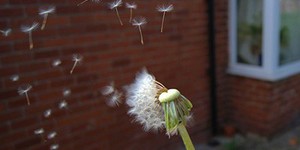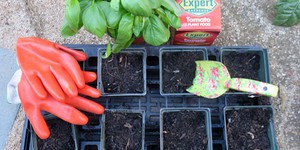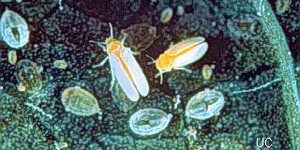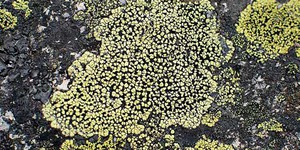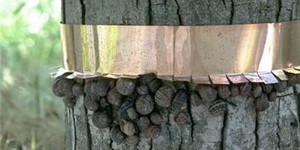Others Like “Do Different Tree Species Grow at the Same Rate?” (top 20 results)
|
Up, up, and away! If you have ever made a wish and blown the fluff of a dandelion, you have witnessed how some plants are adapted to spreading their seeds using the wind. The tiny, furry parachute allows the seeds to be picked up by the wind and to be carried far away from their parent plant. In this experiment, you will make models of seeds and fruit to investigate dispersal by wind and to evaluate
the relationship between the structure of the seed and its ability to be dispersed by the…
Read more
Plants need nitrogen to grow healthy stems and leaves. Although nitrogen is the most abundant element in the air we breathe, that form of nitrogen cannot be used by plants. Nitrogen contained in fertilizer, on the other hand, is readily taken up by plants. In this experiment, you will compare plants grown without nitrogen fertilizer to plants grown with nitrogen fertilizer.
Read more
Plant stems grow through a process of elongation due to cell divisions within the stem. Does the entire length of the stem elongate evenly? Or do certain regions along the plant stem grow more or less than others? Regions that are involved in active growth are called vegetative. You can conduct an experiment to show which regions of a bean seedling are involved in vegetative growth. Use a marker to mark one inch sections along the main stem of a young bean seedling. Number the regions 1-6…
Read more
Leaves grow in a different pattern than stems and shoots. They do not elongate along one axis, but instead spread out over time. Do all regions of the leaf grow equally? You can use markings on different regions of a growing leaf to see if the whole surface grows, or if growth is focused in a particular region, like the veins or edges of the leaf. If you look along a leafy stem, you may notice that leaves at different positions along the stem are different sizes. You can do an experiment to…
Read more
Whiteflies are a group of closely related insect species whose larvae live on plants. Like aphids, they suck nutrients from the plant's circulatory system. What is the most effective method for fighting a whitefly infestation in your garden? This project has some ideas for you to try.
Read more
Animals come in all shapes and sizes, even humans. You can look up different statistics about different kinds of animals using the Internet: average body size, brain size, life expectancy and generation time are some examples. Is there a correlation between body size and life span? Is there a correlation between body size and brain size? Is there a correlation between body size and generation time? Is there a correlation between body size and the size of your footprint? (Comparative Mammalian…
Read more
Have you ever noticed an old stone wall and wondered how long it has been there? If there is lichen growing on the wall, the lichen has most likely been living there since the time the wall was made, so if you could figure out how old the lichen is then you could deduce the age of the wall. Geologies use this method, called lichenometry, and other methods to establish dates and temporal sequences as they seek to construct a history from the available evidence. In this geology science project,…
Read more
What causes landslides? The USGS Landslide Hazards Program conducts research needed to answer major questions related to landslide hazards. Where and when will landslides occur? How big will the landslides be? How fast and how far will they move? What areas will the landslides affect or damage? How frequently do landslides occur in a given locality? Investigate the patterns of landslide occurrence in your area. Are they related to locations, geology, or topography? Are they more frequent…
Read more
Soil may look like a bunch of dirt, but good quality soil is actually a complex mixture of dirt, nutrients, microorganisms, insects and worms. What type of benefit do these microorganisms offer a growing plant? You can test this by baking soil in the oven to sterilize and kill the microorganisms. Do plants grown in sterile soil do better than plants in unsterilized soil? What about adding worms to one plant, but not to the other. Will the plant with worms grow better? Some insects are bad…
Read more
If you have a garden, you probably know about snails (or their shell-less relatives, slugs). You may even be looking for a good way to keep them from getting into your garden and eating up the results of all your hard work. In this science project, you will take a scientific look at one method of discouraging this garden pest.
Read more
|
Explore Our Science Videos
Flying Helicopters on Mars - Paper Models
Will 200 Sticky Notes Hold My Weight?
Science Buddies: Pilobolus Spore Sac Launch


